| Site | Image | Description |
|---|
| Anna site | 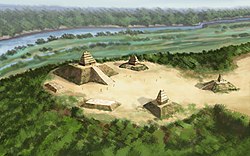 | Located in Adams County, Mississippi 10 miles (16 km) north of Natchez. [30] The type site for the Anna Phase (1200 to 1350) of the Natchez Bluff region. |
| Atchafalaya Basin Mounds | | AKA as Patterson Mounds, Patterson site, Moro Plantation Mounds and the protohistoric village of Qiteet Kuti´ngi Na´mu of the Chitimacha Tribe of Louisiana, originally occupied by the Coastal Coles Creek and later Plaquemine around 980 CE, and by protohistoric period descendants, the Chitimacha, during the 18th century. Located on the northern bank of the Teche at its confluence with the Atchafalaya in St. Mary Parish, Louisiana. It consists of several platform mounds and a shell midden situated around a central plaza. [31] |
| Emerald Mound site |  | Located approximately 8 miles (13 km) north of Natchez. The second largest pre-Columbian structure in the USA and is the type site for the Emerald Phase (1350 to 1500 CE) of the Natchez Bluffs region. |
| Fitzhugh Mounds | 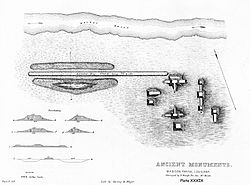 | A Plaquemine/Mississippian site in Madison Parish, Louisiana which dates from approximately 1200–1541. It is the type site for the protohistoric Fitzhugh Phase (1300-1400 CE) of the Tensas Basin chronology. [32] |
| Flowery Mound | | A single mound Late Coles Creek to Plaquemine/Mississippian site in Tensas Parish, Louisiana which dates from approximately 1200–1541. [33] |
| Foster's Mound | | A two mound site in Adams County, Mississippi which dates from approximately 1350 to 1500 CE and is the type site for the Foster Phase. [33] |
| Ghost Site Mounds | | A site in Tensas Parish, Louisiana with an Early to Middle Coles Creek component (700–1200) and a Late Coles Creek to Plaquemine component (1200 to 1541). [34] |
| Glass site | | A large multimound site in Warren County, Mississippi southwest of Vicksburg, on the flood plain in between the Mississippi River and the loess bluffs. It consisted of four mounds surrounding an open plaza, although only 3 are still in existence. [7] |
| Grand Village of the Natchez or Fatherland Site | 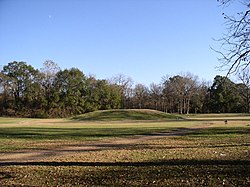 | A historic period Late Plaquemine/protohistoric period site located in the present town of Natchez, Mississippi, one of the very few mound culture sites still in use during the historic period. |
| Holly Bluff site | 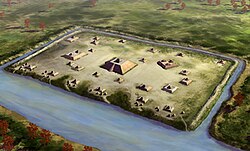 | A Plaquemine/Mississippian site from central western Mississippi, sometimes known as the Lake George Site. It is the type site for the Lake George Phase (1400 to 1500 CE) of the Yazoo Basin region. |
| Jaketown Site |  | A site with two mounds in Humphreys County, Mississippi. While the mounds have not been excavated, pottery sherds found in the area lead scholars to date the sites construction and use to roughly 1100 CE to 1500 CE. Artifacts found in the area demonstrate the site was occupied from 1750 BCE to 1500 CE, making it one of the oldest continuously inhabited sites in the region. [35] There were smaller mounds nearby that were hundreds of years older than the surviving two, built by peoples of a preceding culture, but they were destroyed by plowing and road construction in the early 20th century. |
| Julice Mound | | A mound site in East Carroll Parish, Louisiana dated to 1200–1541 CE and located less than one mile from Transylvania Mounds. [36] |
| Mangum Mound Site |  | A Plaquemine site in Claiborne County, Mississippi, located at milepost 45.7 on the Natchez Trace Parkway. Several avian themed repoussé Mississippian copper plates were discovered there in 1936. [37] |
| Mazique Archeological Site |  | A multimound site in Adams County, Mississippi southeast of Natchez, Mississippi, with components from both the Coles Creek period (700-1000 CE) and the later Plaquemine period (1000-1680 CE), when it was recorded in historic times as the White Apple village of the Natchez people. [38] |
| Medora site | 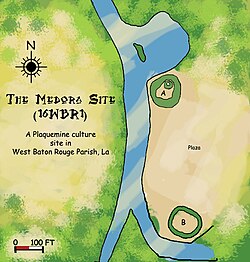 | A Plaquemine site in West Baton Rouge Parish, Louisiana, the type site for which the Plaquemine culture was defined. |
| Pocahontas Mounds | 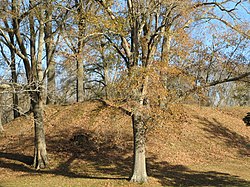 | A multimound site with a platform mound, a mortuary mound, and an associated village area, located in Hinds County, Mississippi and dating to 1000 to 1300 CE. [39] [40] |
| Routh Mounds | | A multimound site located in Tensas Parish, Louisiana that is type site for the Routh Phase(1200 to 1350 CE) of the Tensas Basin chronology. [41] |
| Scott Place Mounds | | A multimound site from the Late Coles Creek-Early Plaquemine period located in Union Parish, Louisiana [42] |
| Sims site | | A multimound site located in Saint Charles Parish, Louisiana near the town of Paradis, first inhabited about 800 CE by Coles Creek peoples. By 1100 CE the culture of the site had transitioned into the Plaquemine culture that lasted until 1450 CE. A little later was a Late Mississippian/protohistic period that lasted from 1500 until about 1700 or 1800. [14] |
| Transylvania Mounds | | A large multimound site with 2 plazas and components from the Coles Creek (700–1200) and Plaquemine/Mississippian periods (1200–1541). It located in East Carroll Parish, Louisiana [43] It is the type site for the protohistoric Transylvania Phase (1400-1650 CE) of the Tensas Basin chronology. |
| Venable Mound | | A single mound site with components from the Troyville, Coles Creek and Plaquemine periods, located in Morehouse Parish, Louisiana [44] |
| Winterville site | 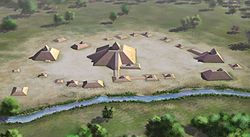 | A Plaquemine/Mississippian site near Greenville, Mississippi. It is the type site for the Winterville Phase (1200 to 1400 CE) of the Yazoo Basin region. |
|



























